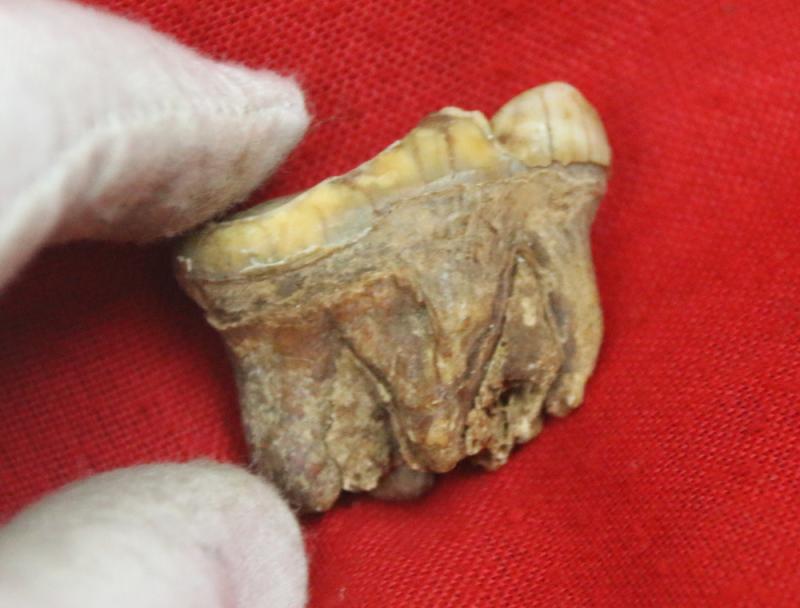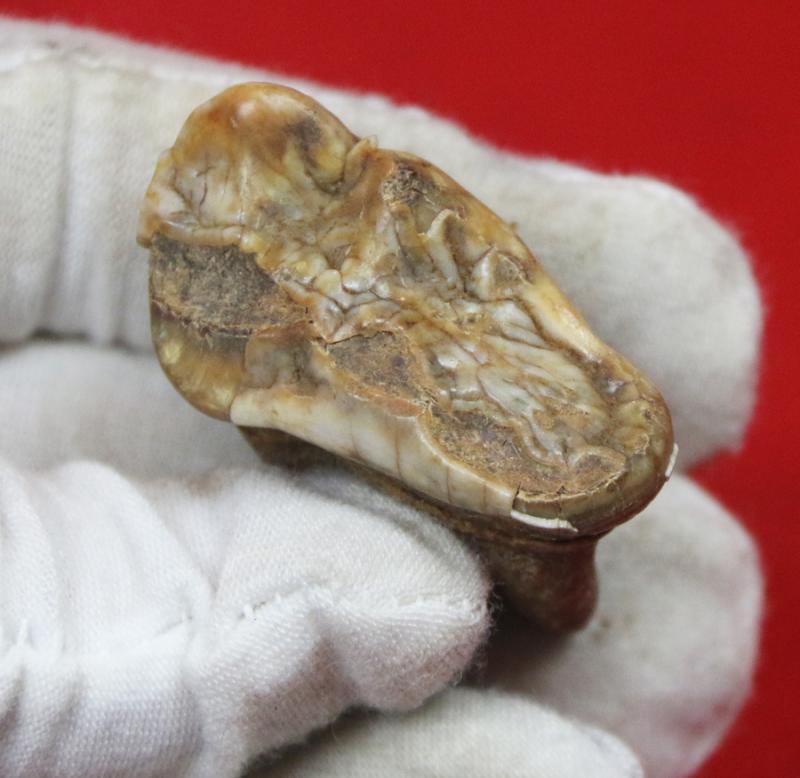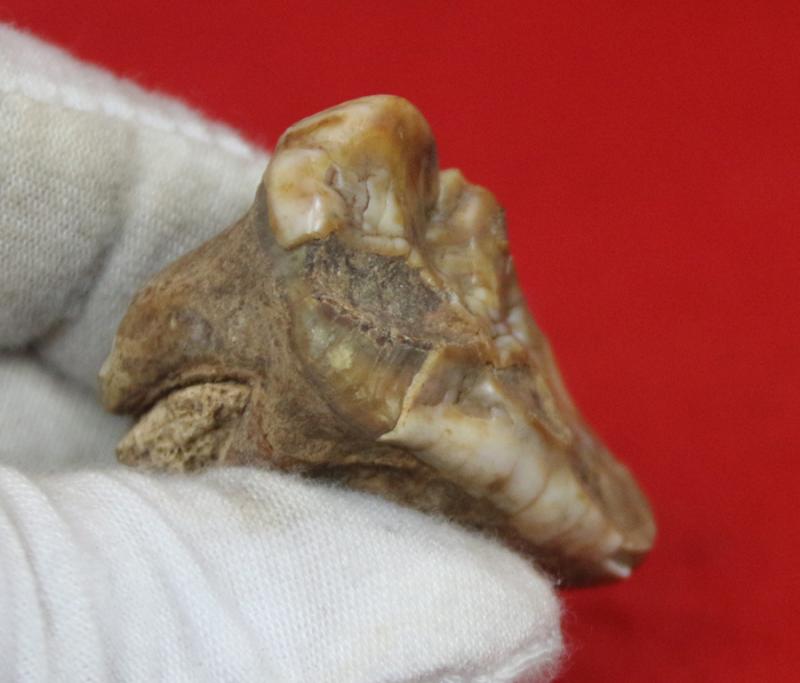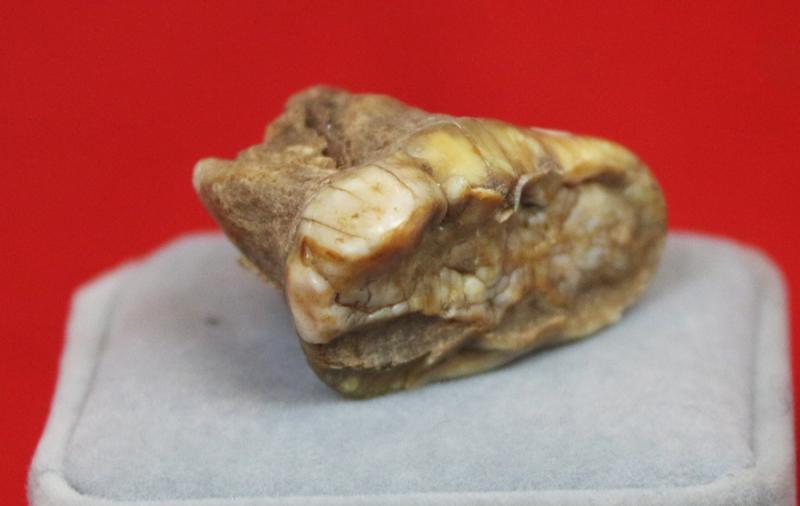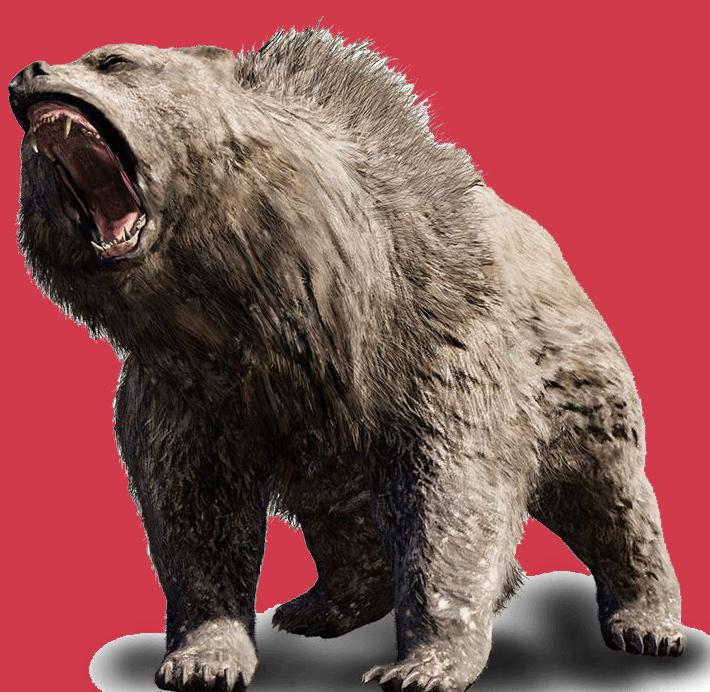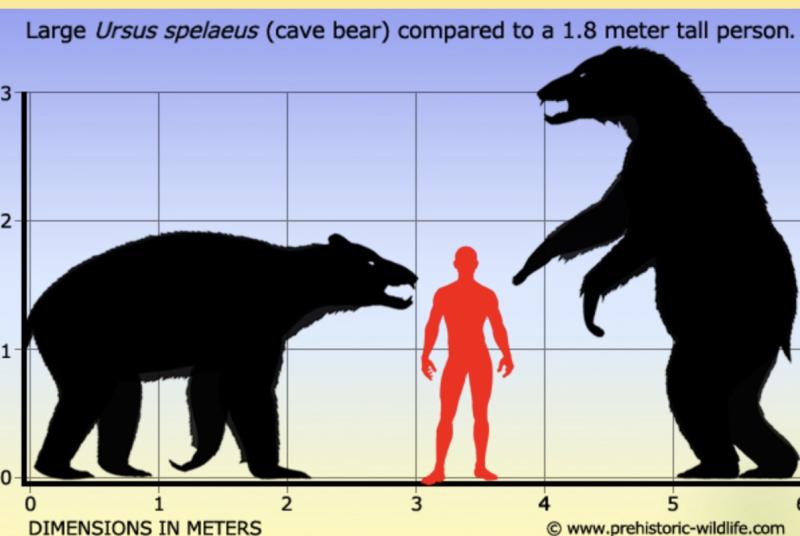A Superb Pleistocene Period Large Cave Bear Tooth. Roots and Jawbone Part, Around 200,000 years Old. A Prehistoric Species of Large Bear Wiped Out in the Last Ice Age
From the Austrian Dragon Cave, Drachenhohle - Mixnitz, in Austria, a prehistoric, extinct Cave Bear molar with roots and jawbone. The cave bear (Ursus spelaeus) was a species of bear that lived in Europe during the Pleistocene and became extinct about 24,000 years ago during the Last Glacial Maximum.
Both the name “cave” and the scientific name spelaeus are because fossils of this species were mostly found in caves, showing that cave bears may have spent more time in caves than the brown bear, which uses caves only for hibernation. Consequently, in the course of time, whole layers of bones, almost entire skeletons, were found in many caves.
Cave bear skeletons were first described in 1774 by Johann Friederich Esper in his book Newly Discovered Zoolites of Unknown Four Footed Animals. While scientists at the time considered that the skeletons could belong to apes, canids, felids, or even dragons or unicorns, Esper postulated that they actually belonged to polar bears. Twenty years later, Johann Christian Rosenmüller, an anatomist at the Leipzig University, gave the species its binomial name
Both the cave bear and the brown bear are thought to be descended from the Plio-Pleistocene Etruscan bear (Ursus etruscus) that lived about 5.3 million years past to 10,000 years ago. The last common ancestor of cave bears and brown bears lived between 1.2 and 1.4 Mya. The immediate precursor of the cave bear was probably Ursus deningeri (Deninger’s bear), a species restricted to Pleistocene Europe about 1.8 Mya to 100,000 years ago. The transition between Deninger’s bear and the cave bear is given as the last Interglacial, although the boundary between these forms is arbitrary, and intermediate or transitional taxa have been proposed, e.g. Ursus spelaeus deningeroides, while other authorities consider both taxa to be chronological variants of the same species.
The cave bear had a very broad, domed skull with a steep forehead. Its stout body had long thighs, massive shins and in-turning feet, making it similar in skeletal structure to the brown bear. The average weight for males was 400 to 500 kilograms (880 to 1,100 lb), while females weighed 225 to 250 kg (495 to 550 lb). Of cave bear skeletons in museums, 90% are male due to a misconception that the female skeletons were merely “dwarfs”. Cave bears grew larger during glaciations and smaller during interglacials, probably to adjust heat loss rate.
Cave bears of the last Ice Age lacked the usual two or three premolars present in other bears; to compensate, the last molar is very elongated, with supplementary cusps. The humerus of the cave bear was similar in size to that of the polar bear, as were the femora of females. The femora of male cave bears, however, bore more similarities in size to those of kodiak bears.
The cave bear was sometimes hunted by Neanderthals during the Stone Age. There are many mass cave bear burial sites indicating these early humans actually worshipped the cave bear with its image often represented on cave walls.
Code: 24561
220.00 GBP



